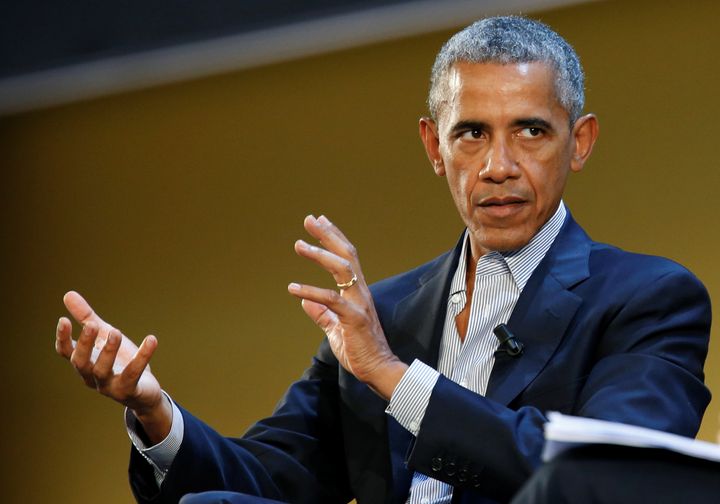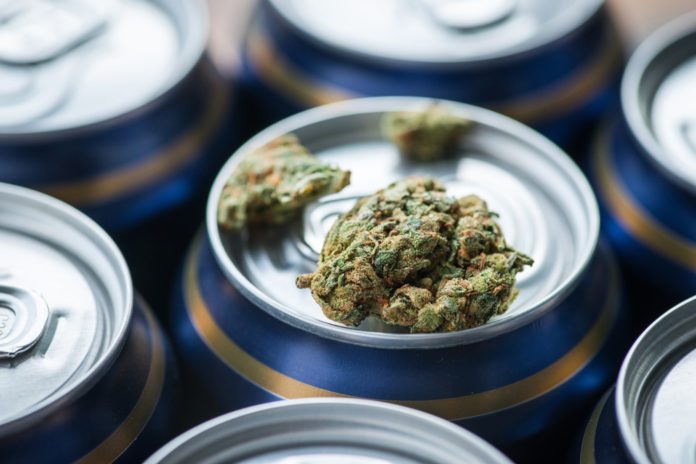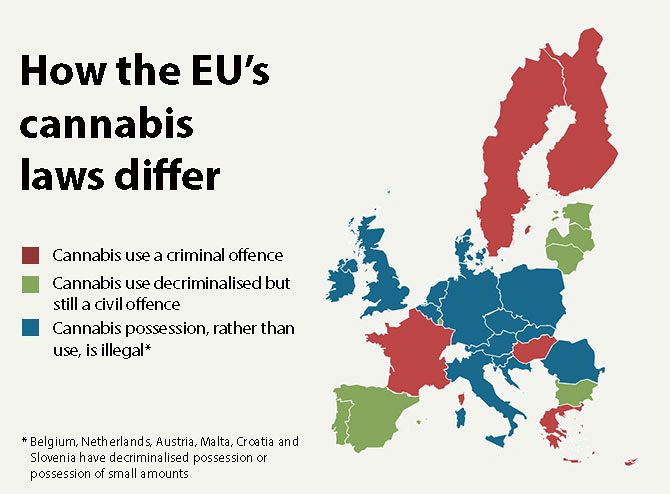But they never made their case publicly.

Alessandro Garofalo/Reuters
WASHINGTON
― Officials at the Office of National Drug Control Policy under
President Barack Obama wanted to take a more lenient stance on
marijuana, with one former official telling HuffPost that staff pushed
to ease federal prohibitions against the drug. But they never made that
case directly to the public.
“ONDCP
was in favor of decriminalizing but not legalizing,” explained former
deputy director A.
Thomas McLellan, who worked in the White House office during Obama’s first term.
Thomas McLellan, who worked in the White House office during Obama’s first term.
Such
a policy shift could have given a shot of momentum to efforts to relax
marijuana laws across the country. But it never happened, in large part
because officials were worried it would consume the office at a time
when they needed to focus on the more pressing issue of the opioid
epidemic.
The
Office of National Drug Control Policy, which is more commonly known as
the drug czar’s office, also determined that it couldn’t publicly
support decriminalizing marijuana because of a provision in the
legislation that authorized its existence.
The bipartisan 1988 law that
created the drug czar’s office declared that “the legalization of
illegal drugs is an unconscionable surrender in the war on drugs.” A
later measure reauthorizing the office stipulated that no federal funds
be used to study the legalization of marijuana or other Schedule I drugs
and that the office had to “oppose any attempt to legalize” cannabis.
As long as that language existed, Obama era staffers felt limited in
their ability to speak out, let alone to signal real support for
decriminalization.
“It
forced the office to take a policy position that it may or may not
agree to,” Michael Botticelli, the former director of the drug czar’s
office, told HuffPost. “[It] hamstrings you into a policy position that
might be the policy of the day but that might change.”
The
anti-marijuana language in the statute not only hamstrung the office in
taking new policy positions; it encouraged pro-marijuana advocates to
question the office’s credibility on the issue.
“The
existence of that statute, that prohibition, has been something that
our movement has held up to criticize ONDCP,” said Tom Angell, the
founder of Marijuana Majority.
“Taking that off the table would be good for us and it would also be
good for them. … It makes them look political in ways that their
scientists probably don’t want to be.”
Officials
within the drug czar’s office during the Obama administration agreed
with Angell. Many suggested privately that the statute undermined their
authority. “It makes it look like the office’s primary purpose is to
oppose marijuana,” said another former employee.
The
statute also made answering questions about marijuana policy
complicated. When Botticelli was a deputy within the office, Rep. Steve
Cohen (D-Tenn.) introduced legislation to remove the
by-then-controversial language on marijuana. The bill went nowhere. Botticelli struggled even to answer questions on the subject.
Operating
within these political and legal constraints, Botticelli and others
adopted more nuanced approaches to their work. The office pushed to
obtain more federal funding for treatment.
It supported states that sought to route those addicted to illegal substances like opioids away from the criminal justice system and into treatment. Botticelli supported the Justice Department’s efforts to shed the more onerous drug war era initiatives such as requiring mandatory minimum sentences for even low-level drug possession.
It supported states that sought to route those addicted to illegal substances like opioids away from the criminal justice system and into treatment. Botticelli supported the Justice Department’s efforts to shed the more onerous drug war era initiatives such as requiring mandatory minimum sentences for even low-level drug possession.
In a December 2015 interview on “60 Minutes,” Botticelli declared the war on drugs a failure.
“We can’t arrest and incarcerate addiction out of people,” he said. “Not only do I think it’s really inhumane, but it’s ineffective and it cost us billions upon billions of dollars to keep doing this.”
“We can’t arrest and incarcerate addiction out of people,” he said. “Not only do I think it’s really inhumane, but it’s ineffective and it cost us billions upon billions of dollars to keep doing this.”
Later
in that interview, Botticelli was asked about legalizing marijuana, not
just decriminalizing penalties for its use. He said he was against
states’ commercializing the drug. “It becomes an addiction to,
unfortunately, a tax revenue that’s often based on bad public health
policy,” he said.
His predecessor had had similar reservations about outright legalizing marijuana.
His predecessor had had similar reservations about outright legalizing marijuana.
The
closest Botticelli came to addressing the decriminalization issue
directly occurred when District of Columbia residents voted to ease
restrictions on marijuana use. “I might not agree about legalization,
but I do agree with our own ability to spend our own money the way that we want to,” he said.
Neither
Botticelli nor his office would go much further than that during the
eight years of the Obama presidency. Had they done so, they would have
incurred blowback from both parties in Congress and alienated drug
prevention advocates who oppose marijuana use. More importantly, the
controversy would likely have distracted from the more critical opioid epidemic. That crisis ended up driving home the argument for a public health approach to drug addiction.
“You have to figure out if the juice is worth the squeeze,” said the former drug czar employee.
Of
course, taking a stand in favor of marijuana decriminalization might
also have given advocates a major boost in their efforts to change the
conversation around marijuana policy.
Now,
under the Trump administration, any internal angst over marijuana is
likely moot. Soon after taking over the Justice Department, Attorney
General Jeff Sessions began reversing
the previous administration’s reforms. Sessions has instructed his
prosecutors to vigorously enforce mandatory minimum sentences.
Those changes are “very alarming,” Botticelli told HuffPost.
“It
seems like we are moving backwards instead of forward,” he said. “And
to a position that I think doesn’t have a lot of science and evidence.
We’ve tried that approach for a very long time, and it doesn’t seem to
really have made a significant difference.”













